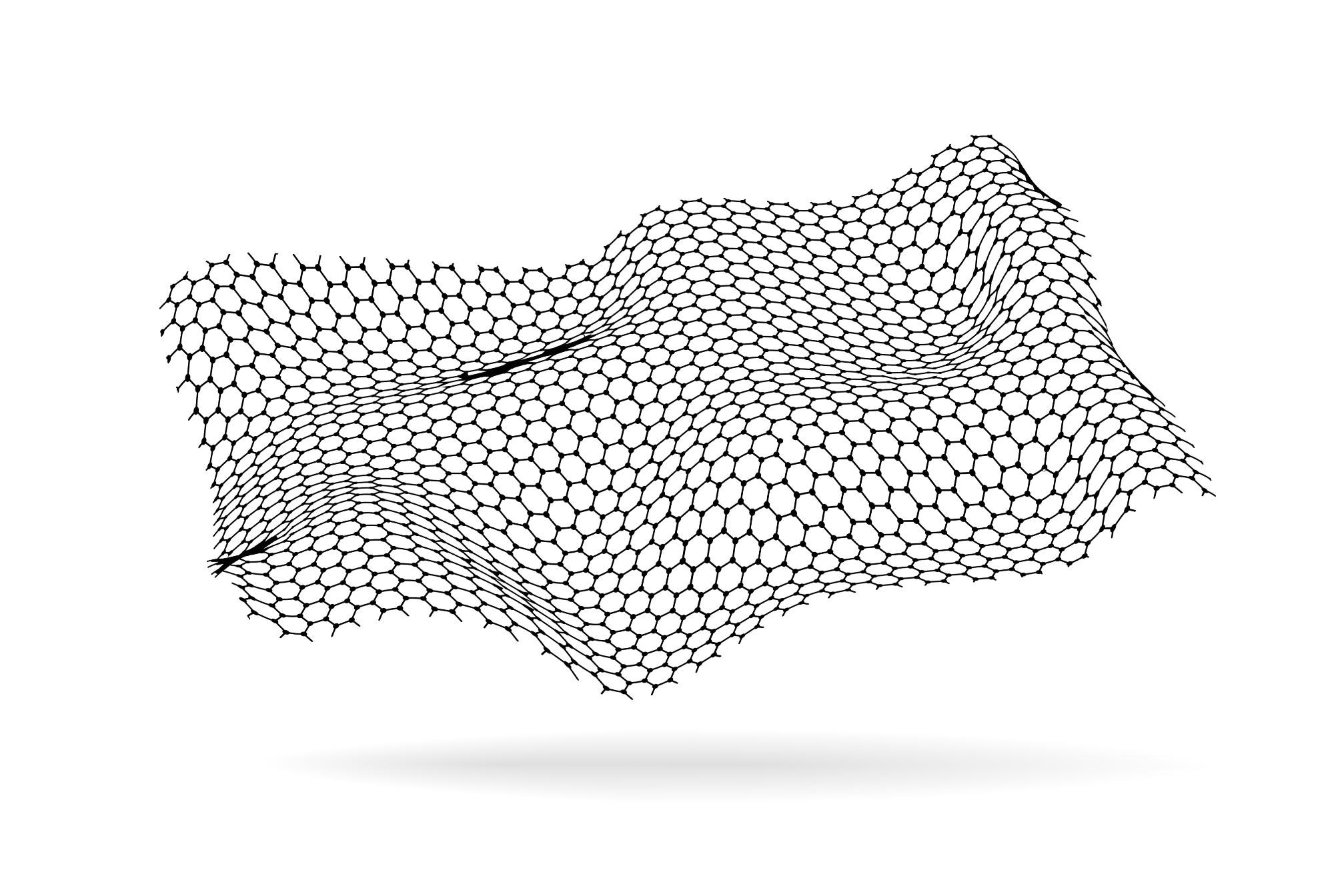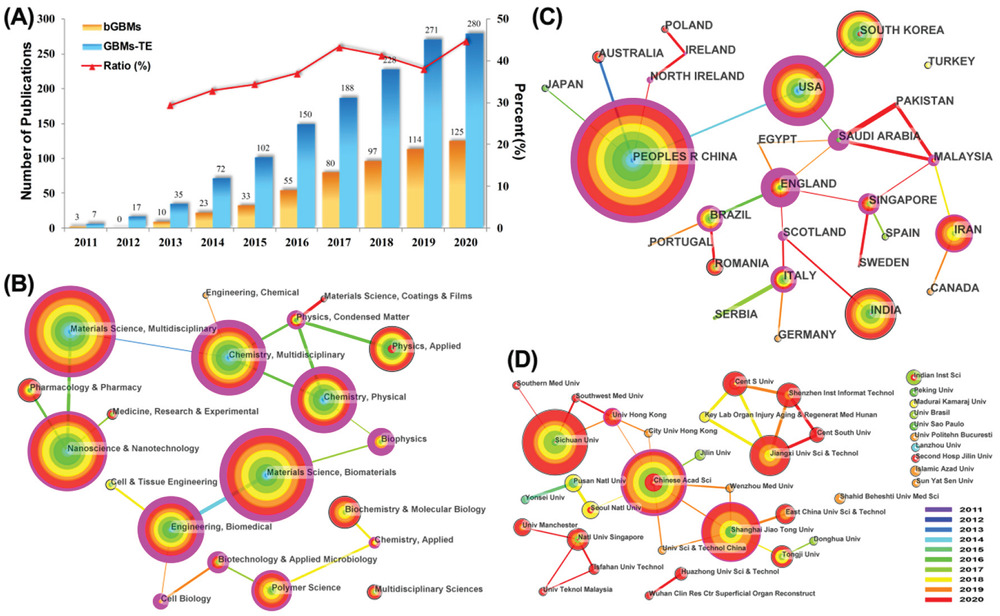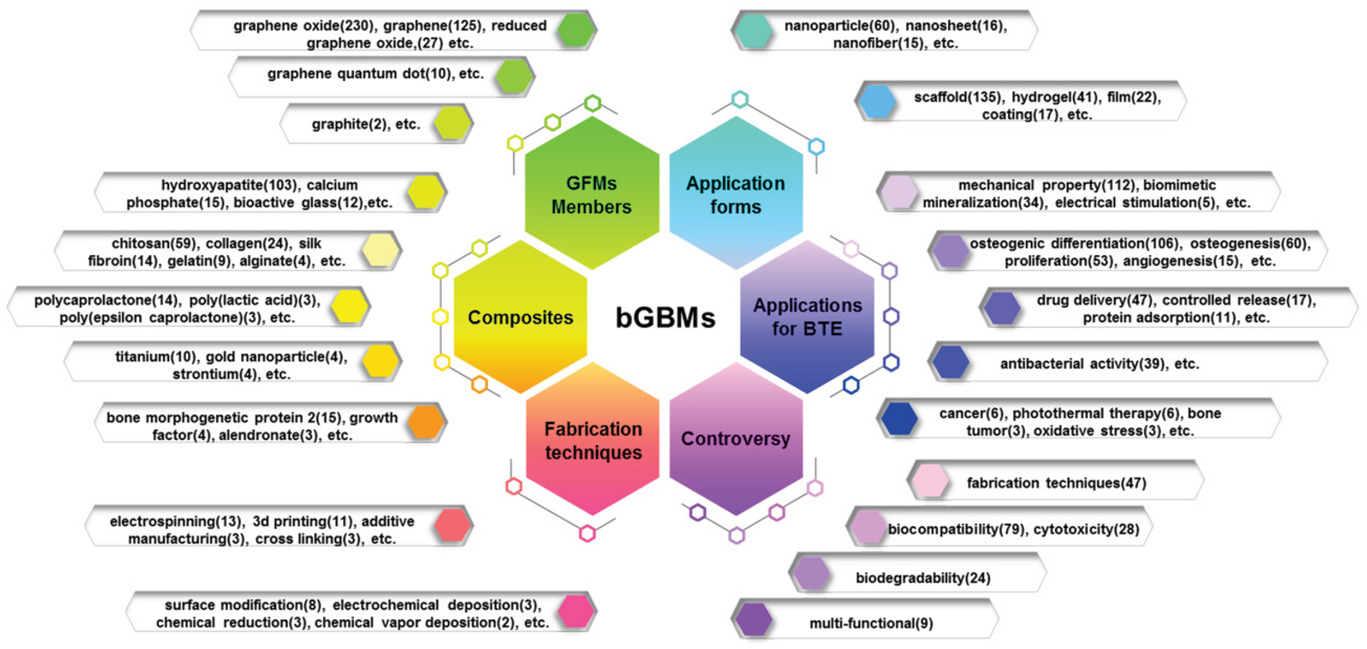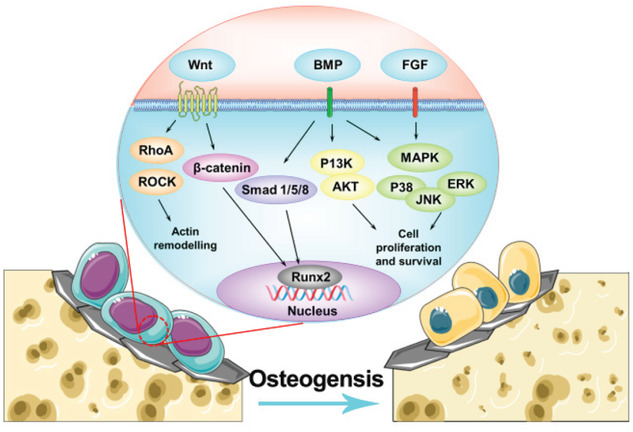A new review presented in the Global Challenges journal uses an innovative scientometric approach and the CiteSpace software to collate and quantitatively analyze the wide range of research into bone regeneration-related graphene-based materials (bGBMs) and their applications.
 Study: Development of Graphene-Based Materials in Bone Tissue Engineering. Image Credit: My Portfolio/Shutterstock.com
Study: Development of Graphene-Based Materials in Bone Tissue Engineering. Image Credit: My Portfolio/Shutterstock.com
Bone regeneration-related graphene-based materials are the subject of considerable research due to their capacity to help address bone defects resulting from factors such as congenital defects, or traumatic injury.
These defects are often unable to be healed through natural processes, requiring interventions and treatments such as allografts, autografts, and biomaterials specifically developed for bone regeneration.
Autografts remain the gold standard approach and are regarded as offering robust osteogenicity, but this is an invasive surgical operation that requires the harvesting of suitable bone material from rare donor sites. Meanwhile, allografts carry associated risks of disease transmission and immunological rejection.

A) Number of yearly publications on bGBMs (2011–2020). B) The network of subject distribution. C) The network of contribution and cooperation of countries. D) The network of contribution and cooperation of institutions. Image Credit: Pan, X et al., Global Challenges
Advances in bone tissue engineering (BTE) have been found to be a viable alternative to these methods, offering the potential for higher-level restoration of bone defects via a combination of seeding cells, scaffolds, and specific biological factors to either form a functional substitute to a damaged or defective area of bone, or assist the body in its own in situ regeneration.
Bone tissue engineering research has historically seen stem cells implanted into defective bone sites. These stem cells are supported by a scaffold fabricated from a suitable biomaterial, allowing the stem cells to proliferate and differentiate into osteoblasts able to encourage regeneration of the affected bone.
These methods have notable limitations, however, prompting a range of studies looking to enhance the properties of biomaterial-based scaffolds, even supplementing or replacing these with nanoscale metals, polymers, ceramics or materials from the graphene family.
Both graphene family materials and composites which incorporate graphene have attracted a great deal of interest for their potential to support bone regeneration, as well as their wider application in tissue engineering and regenerative medicine.

Classification of the 235 keywords according to the themes of GFMs members, composites, fabrication techniques, application forms, applications for BTE, and controversy. The frequency of keyword occurrences is numerically marked in parentheses. Image Credit: Pan, X et al., Global Challenges
The authors opted to conduct a comprehensive review on work in this area, primarily due to the need to clarify and collate work that was, in some cases, controversial or unclear.
Both graphene family materials and their related composites have shown excellent potential in encouraging cell proliferation, osteogenic differentiation, and even in vivo bone regeneration; but issues surrounding the functional mechanisms underlying these processes and the associated risks of their biodegradability and potential for cytotoxic reactions require further analysis.
To address this issue and to begin to elucidate and collate the varied research in this field, the paper’s authors opted to systematically review the existing literature on bone regeneration-related graphene-based materials with a view to summarizing key developmental themes and clarifying some of the otherwise unclear or controversial facets of this work.
In order to ensure that their approach was as robust and objective as possible, they leveraged the power of the CiteSpace scientific knowledge mapping software to quantitatively analyze the literature and present the review’s results in a visual and easier-to-understand manner.
This innovative software is able to collate and provide visual summaries of academic literature by analyzing its title, keywords, abstract, authors, country of research, journal of publication, and its related references.
Using this information, the software is able to provide useful insight into the status of research projects, topics, or overarching fields, as well as highlighting trends or current hotspots relating to the subject under investigation.
Using this software, the paper’s authors undertook a scientometric analysis of published literature on bone regeneration-related graphene-based materials that had been indexed in the Web of Science Core Collection (WOSCC) database. The study focused on literature from 2011 to 2020, aiming to summarize work in this area over the past decade.
By using the software to develop and analyze a cluster network obtained from co-occurrence keywords and cocitation references, the authors were able to gain insight into ongoing research into the fabrication of graphene and its family of materials.

A schematic view of the complex network of the GFMs mediated signaling pathways in regulating bone regeneration. Image Credit: Pan, X et al., Global Challenges
They concluded that this has evolved from the printing of graphene in limited numbers of layers to the development of functionalized graphene oxide and reduced graphene oxide. This had in turn led to the development of 3D-printed scaffolds that had shown good potential for use in bone tissue engineering.
They also determined that advances in manufacturing technology have led to improvements in graphene’s dispersibility and stability in physiological solutions, helping to achieve the levels of biocompatibility and biodegradability essential for safe use in bone tissue engineering.
Gaps in the research were also identified, highlighting the need for further work in this area. This was especially notable in terms of the results of investigations into graphene’s biological properties, where it was difficult to summarize the results of studies due to the sheer range of differences in the applications reported; for example, the shape, dose, exposure route, purity and surface chemistry of the graphene materials used.
Despite this and other issues, the authors report that bone regeneration-related graphene-based materials have excellent application prospects, and it is hoped that their comprehensive and robust approach to reviewing the current work in this area will lead to more targeted, refined, and standardized means of developing this technology further.
References
Pan, X., Cheng, D., Ruan, C., Hong, Y., Lin, C., Development of Graphene-Based Materials in Bone Tissue Engineering. Global Challenges 2021, 2100107. https://onlinelibrary.wiley.com/doi/10.1002/gch2.202100107
Disclaimer: The views expressed here are those of the author expressed in their private capacity and do not necessarily represent the views of AZoM.com Limited T/A AZoNetwork the owner and operator of this website. This disclaimer forms part of the Terms and conditions of use of this website.